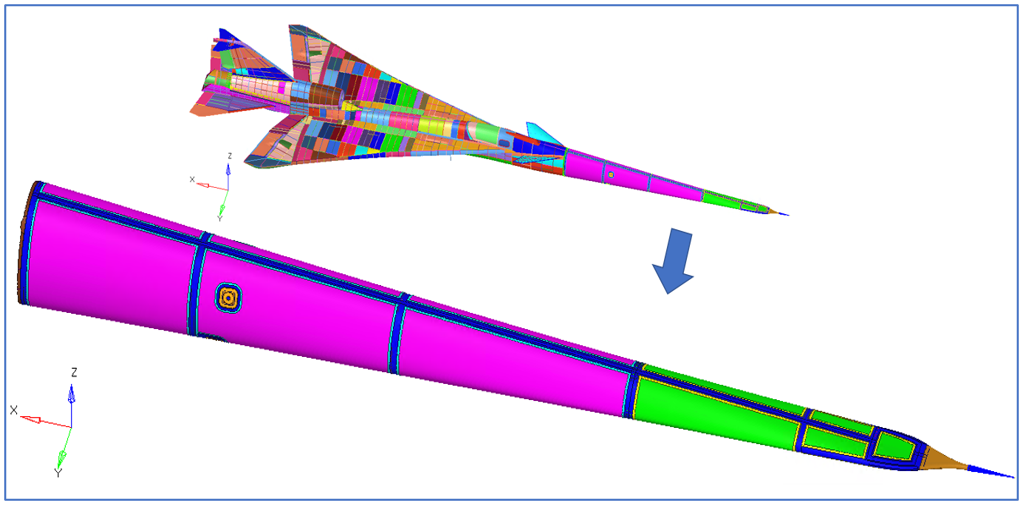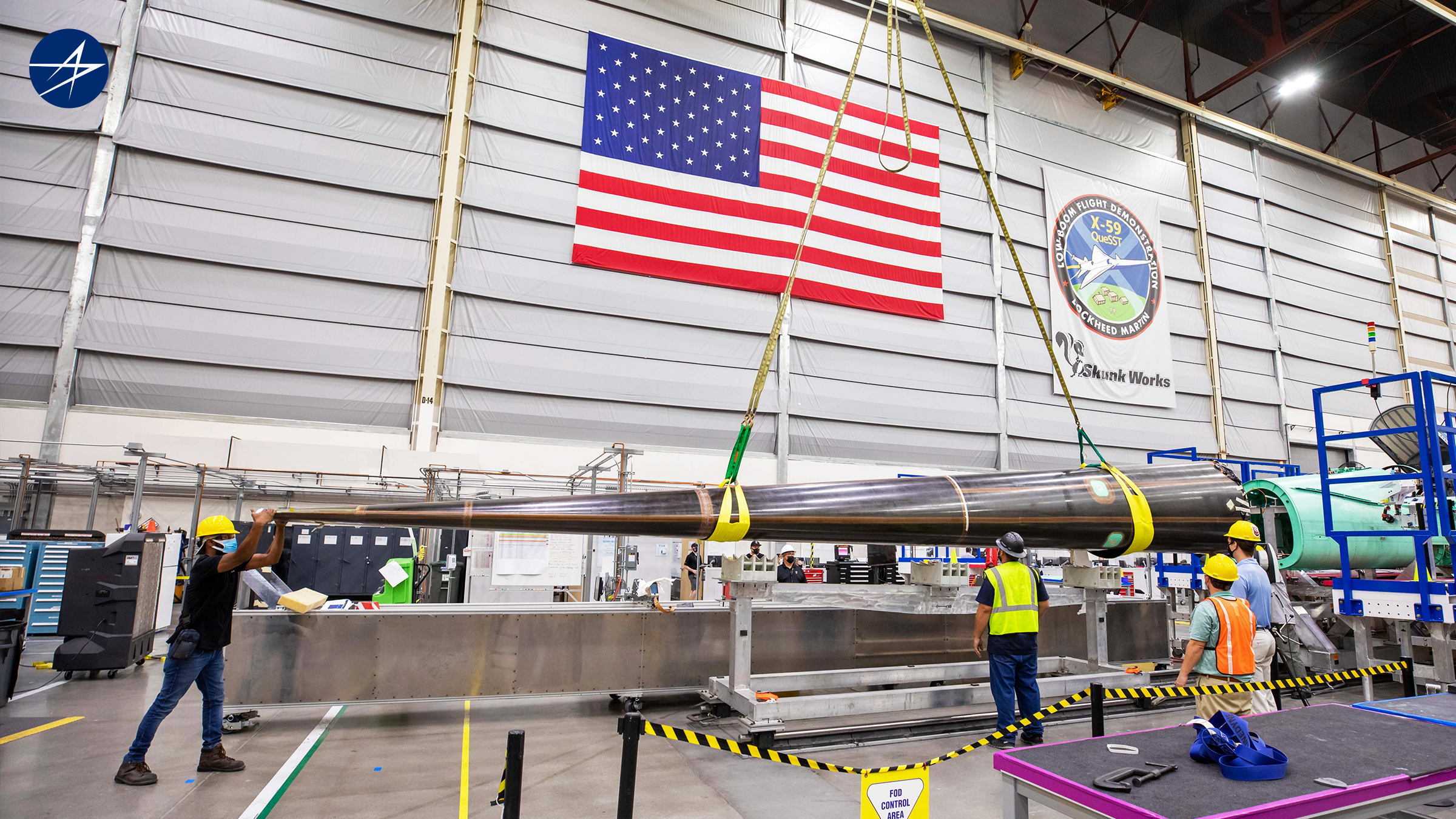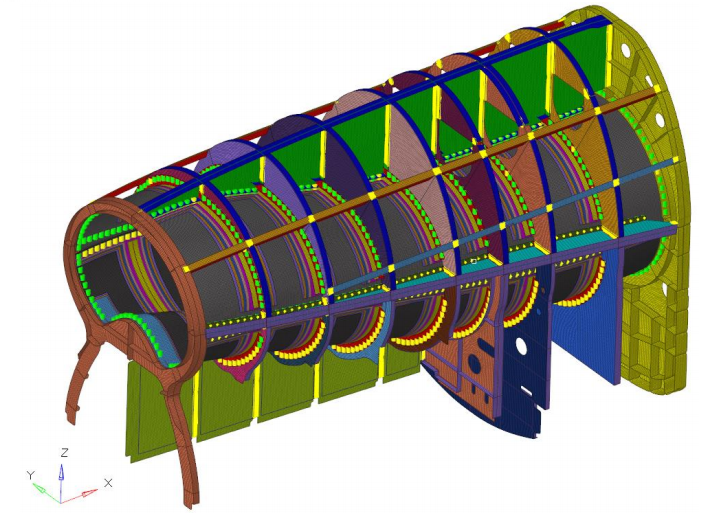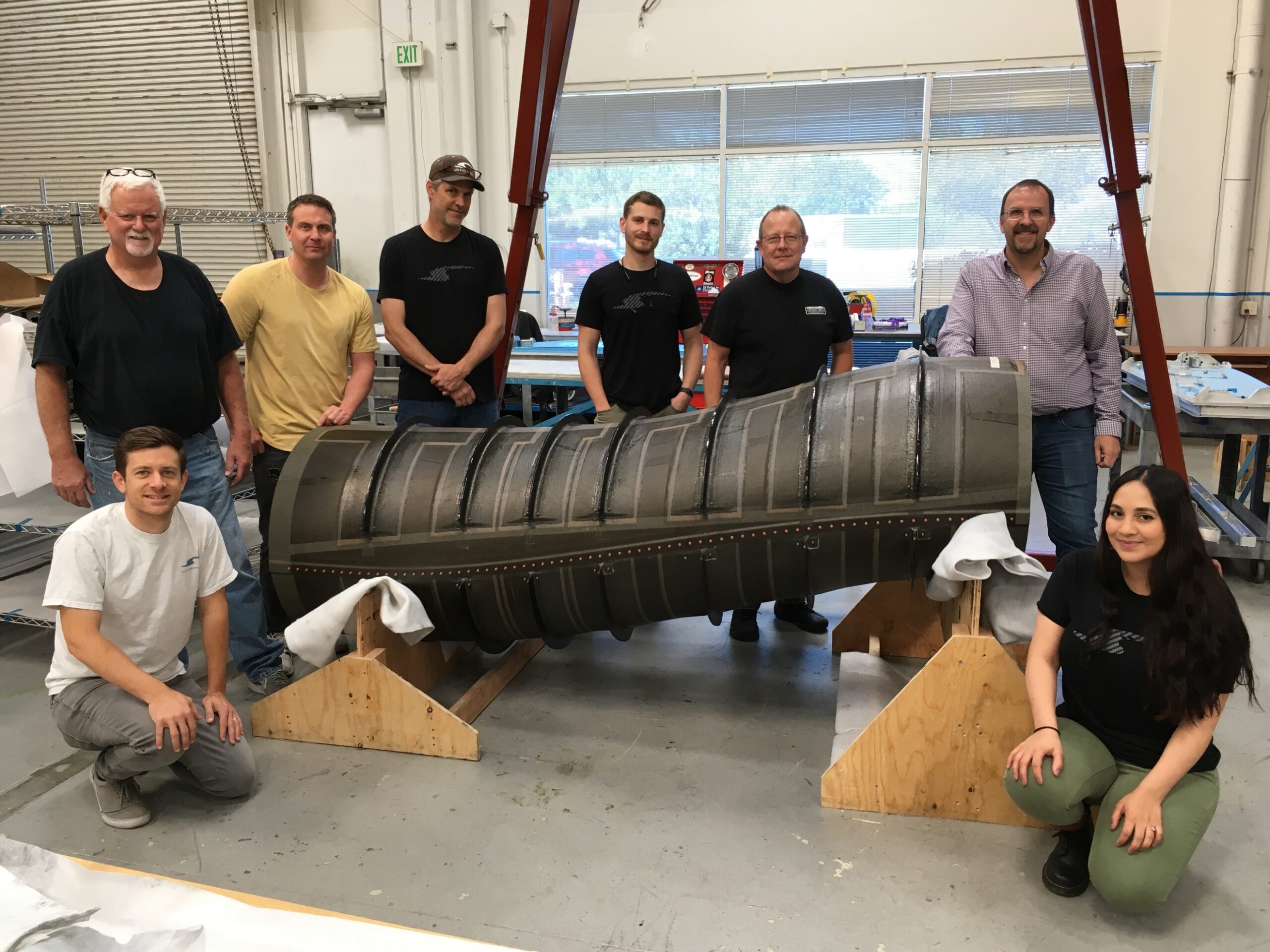X-59 Quiet SuperSonic Technology (LBFD)
Low Boom Flight Demonstrator
optimize a lightweight laminate composite structure to meet structural integrity criteria and manufacturing requirements, including full stress substantiation.
Swift Engineering Inc. was contracted to perform detailed design and build the nose and the main air intake duct for the X-59 Quiet SuperSonic Technology (QueSST). Aerodynamic surfaces were provided by LMA (Lockheed Martin Aeronautics Company), and Swift Engineering Inc. was tasked to develop and optimize a lightweight laminate composite structure to meet structural integrity criteria and manufacturing requirements, including full stress substantiation.
The final optimized designs met all structural and manufacturing requirements with mass being -13% lower than target for the Nose and -11% lower than target for the Duct. Both sub-assemblies were delivered on schedule and within budget.

GFEM (Customer Supplied) vs. DFEM (Generated) Validation
Functional requirements such as aerodynamic capability, dimensional stability, operating temperature capability, mass properties, center of mass, useful life, environmental operation, accidental impact, and operational service were considered and adhered to.
Initial trade studies were performed to determine required structural layout, including number of supporting structures using a detailed DFEM (Detailed Finite Element Model) model integrated into the global loads GFEM (Global Finite Element Model) model. Load screening on several hundred loadcases was performed to determine the critical enveloping loadcases. DFEM models were validated by comparing the original GFEM to the generated DFEM.
DFEM models were then used to determine the critical structural details (ply count, ply layout, ply sequence, number of required reinforcing ribs/bulkheads, number of attachment locations to the surrounding aircraft structure, and method of manufacture. Interfacing airframe structure was monitored to ensure loads remained withing criteria. Sub-model DFEM analysis and optimization of the structure were performed using in-house tools to ensure structural integrity.
Rapid design, development, and manufacturing
Detailed designs were then developed in CAD using initial inputs from the trade study and DFEM analysis with consideration of manufacture, assembly, and service accessibility. The DFEM models were then generated using the detailed CAD and optimized for stiffness, strength, and mass using automated in-house optimization software to meet composite and metallic failure criteria. The DFEM optimization determined ply placement, ply sequence, ply count, number of required fasteners, and fastener size. Margin of Safety was calculated for each part against each relevant strength criteria and substantiated. Fatigue life, buckling, and crippling assessments were also performed. CAD was then updated to reflect the final optimization results.
The key to success on this project was the level of experience and interaction of key LMA and Swift project personnel, regular communications with the customer, and the customer’s rapid response during design, development, and manufacture.






